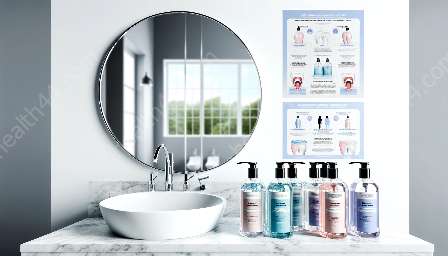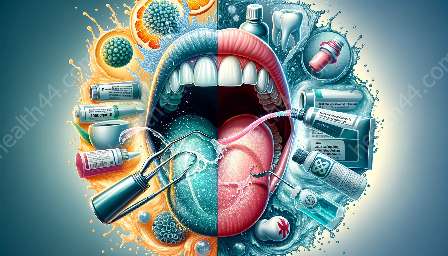Proper oral hygiene is essential for maintaining healthy teeth and gums. Oral hygiene practices, including brushing, flossing, and mouthwash usage, play a crucial role in preventing oral health problems such as cavities, gum disease, and bad breath. In this comprehensive guide, we will delve into the importance of oral hygiene practices, explore the benefits of using mouthwash, and learn how to use mouthwash effectively for optimal oral health.
Importance of Oral Hygiene Practices
Oral hygiene practices are essential for removing plaque, a sticky film of bacteria that can lead to various oral health issues. Brushing your teeth at least twice a day helps remove plaque and prevent the buildup of tartar, a hardened form of plaque that can only be removed by a dental professional. Additionally, flossing between your teeth helps remove food particles and plaque that may be missed by brushing alone, reducing the risk of developing cavities and gum disease.
Furthermore, incorporating mouthwash into your oral hygiene routine can provide additional benefits. Mouthwash, also known as mouth rinse, is a liquid product used to rinse the oral cavity and throat. It can help reduce oral bacteria, freshen breath, and promote overall oral health.
Benefits of Using Mouthwash
There are several benefits associated with regular use of mouthwash as part of your oral hygiene regimen:
- Reduces Bacteria: Mouthwash containing antibacterial ingredients can help reduce the levels of bacteria in the mouth, lowering the risk of oral infections and gum disease.
- Freshens Breath: Many mouthwashes contain ingredients that can mask bad breath and leave the mouth feeling clean and fresh.
- Prevents Plaque and Gingivitis: Some mouthwashes are formulated to help reduce plaque and prevent the onset of gingivitis, a common form of gum disease.
- Whitens Teeth: Certain mouthwashes contain whitening agents that can help remove surface stains from teeth, resulting in a brighter smile.
How to Use Mouthwash Effectively
Using mouthwash effectively is key to reaping its benefits. Follow these steps for optimal results:
- Choose the Right Mouthwash: There are different types of mouthwashes available, including antibacterial, fluoride, and cosmetic mouthwashes. Select a mouthwash that suits your specific oral health needs.
- Read the Instructions: Always read the label or package insert of the mouthwash to understand how to use it properly. Pay attention to the recommended dosage and duration of rinsing.
- Measure the Right Amount: Pour the recommended amount of mouthwash into a cup. Typically, a 20-30ml dose is sufficient for a thorough rinse.
- Swish and Gargle: Take the measured mouthwash into your mouth and swish it around, making sure to reach all areas of the oral cavity. Gargle the mouthwash at the back of your throat for a few seconds before spitting it out.
- Do Not Swallow: It's important to avoid swallowing mouthwash, as it is not meant to be ingested. Spit it out after swishing and gargling.
- Timing Matters: Use mouthwash at a different time from brushing to ensure that the fluoride from the toothpaste is not diluted by the mouthwash. It is best to use mouthwash at a time when you will not be eating or drinking for at least 30 minutes afterward to allow the active ingredients to take effect.
Mouthwash and Rinses
In addition to traditional mouthwash, there are specialized rinses available for specific oral health concerns, such as dry mouth, fluoride rinses for cavity prevention, and antiseptic rinses for treating gum disease. These rinses can be used in conjunction with regular mouthwash and may be recommended by a dentist for individuals with specific oral health needs.
By incorporating proper oral hygiene practices and using mouthwash effectively in your daily routine, you can maintain a healthy and vibrant smile while reducing the risk of oral health problems. Remember to consult with your dentist to determine the most suitable oral hygiene regimen for your individual needs.









